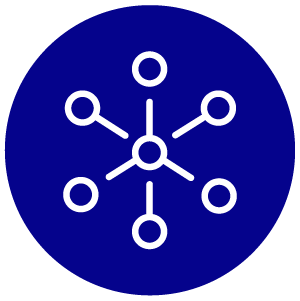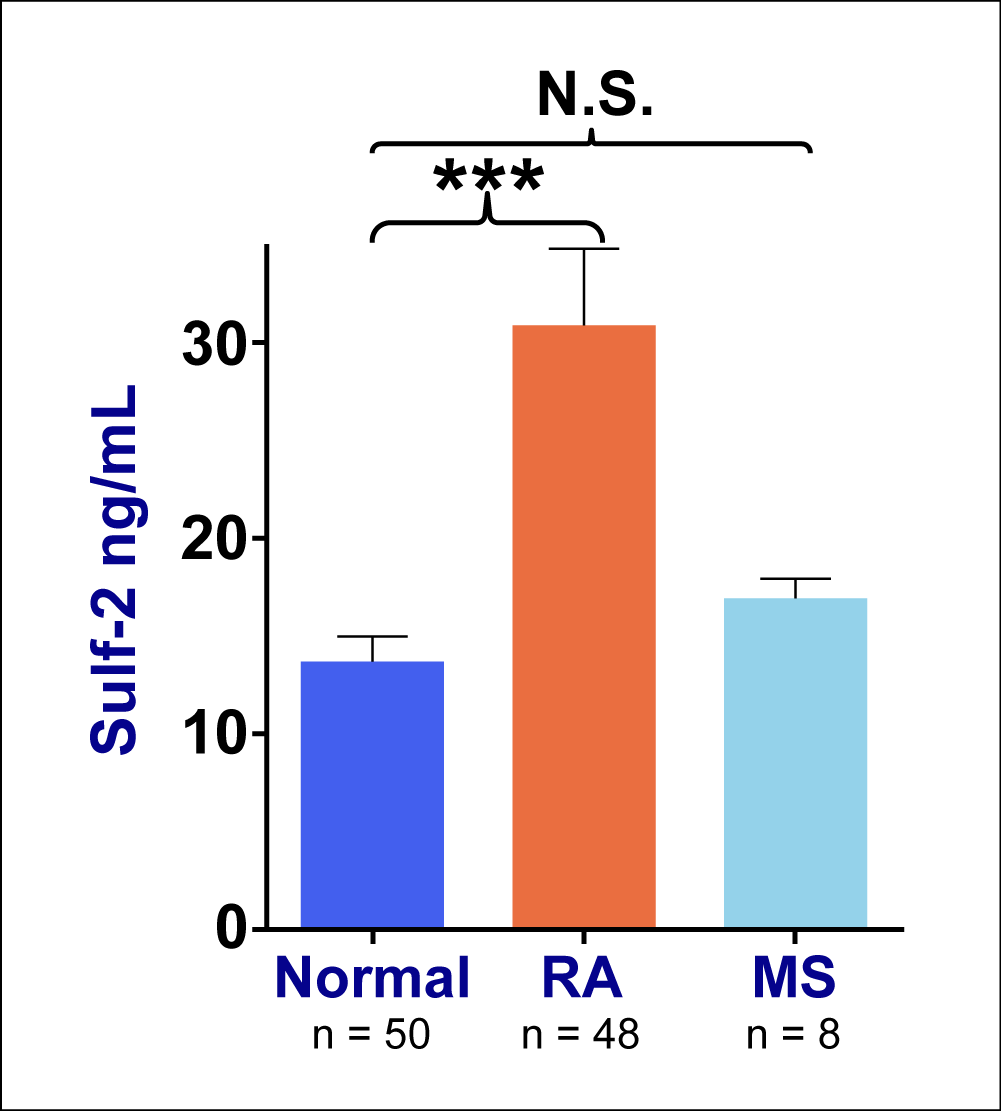
Linking a drug mechanism
to a human disease
A specific autoimmune indication was identified for a novel therapy using patient donor biospecimens.
Siegal RJ et al. (2022) Cell Mol Immunol. 19:1185–1195.

OBJECTIVE
Determine whether a drug target represents a viable treatment avenue for a specific human disease condition.

STUDY
Sera were collected in-home from patients with either rheumatoid arthritis (RA) or multiple sclerosis (MS) and healthy-matched controls.

INSIGHT
Sulf-2 levels were significantly higher among the RA cohort than MS or healthy controls, suggesting Sulf-2 inhibition may represent a viable therapeutic strategy specific to RA autoimmunity.
Sulf-2 and autoimmune disease
While therapeutic modalities addressing a biological mechanism are often translatable to humans, their performance in the context of specific human disease states warrants investigation.
The cancer drug target Sulf-2 is believed to regulate several inflammatory pathways, including TNFα, but its role in various autoimmune conditions is unknown.
Study description
A multi-institute team designed a prospective study with Sanguine to interrogate Sulf-2 in sera from patients with either rheumatoid arthritis (RA) or multiple sclerosis (MS) and healthy-matched controls.
Results and Conclusions
In this early-stage study, Sulf-2 levels were significantly higher among the RA cohort than MS or healthy controls, suggesting Sulf-2 inhibition may represent a viable therapeutic strategy specific to RA autoimmunity (Figure 1). Subsequent experiments in patient-derived synovial tissue and mouse models demonstrated a unique role of Sulf-2 in TNFα -mediated activation of RA synoviocytes, green-lighting further preclinical investigations.

Figure 1. Serum levels of soluble Sulf-2 in healthy, RA, and MS patients.
Reference
Siegel, R. J. et al. Extracellular sulfatase-2 is overexpressed in rheumatoid arthritis and mediates the TNF-α-induced inflammatory activation of synovial fibroblasts. Cell Mol Immunol. 19, 1185–1195 (2022).